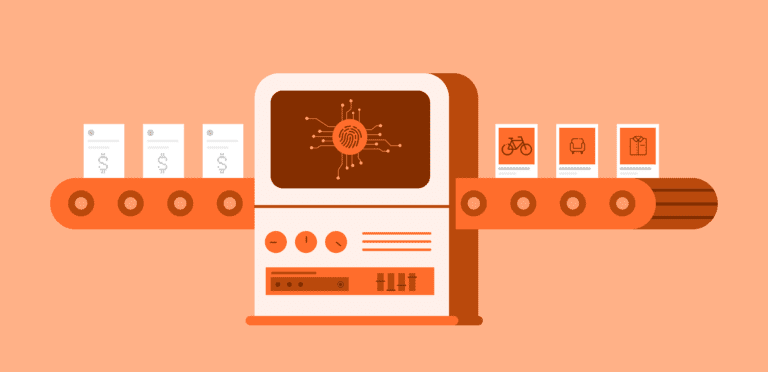Big Data in the simplest terms, is the large-scale collection of information used for analytics and insights.
Big Data in the simplest terms, is the large-scale collection of information used for analytics and insights.
We talk a lot about data. About how organizations collect and sell your data, how advertisers use your data to sell you their products, about what your data is worth, and even the principles that define the relationship between our company and your personal data. Big Data is an industry built on massive stores of information and represents a greater trend in the tech market. Every click, like, comment, and transaction creates new data, and Big Data is collecting every single byte.
So what is Big Data? In the simplest terms, Big Data is exactly what it sounds like—the large-scale collection of information used for analytics and insights, with “big” being the operative word. Big Data exists when someone collects so much information that it can no longer be structured by traditional methods. If we think of data like water, traditional data collection models are the equivalent of filling your glass from the tap—it’s simple, manageable, and controlled. By comparison, Big Data is the equivalent of trying to fill that same glass at the bottom of a waterfall—you might get something in your cup, but more than likely, you’ll be overwhelmed and knocked to the ground in the process. Humans simply cannot collect, sort, assess, and store information at the pace required to comprehend Big Data sets.
There’s power and potential in Big Data, but only if you can control it. Artificial Intelligence, or AI, helps bring structure to these massive data sets. Just like a dam can harness the power of a waterfall, AI can process, refine, and apply Big Data in real-time to create valuable insights for its operators. AI is a wide range of technologies built around recreating human cognitive capabilities inside machines and includes everything from logical processing and machine learning to statistics and operating systems.
Together, Big Data and AI are redefining the world as we know it.
The relationship between Big Data and AI
There’s a tension at the beginning of any new technology. Emerging markets rely on both the product and the infrastructure to exist at the same time, but those offerings are rarely developed in tandem. For example, the mass production of automobiles only worked as long as there were roads and gas stations to support them. But in 1913, opening a gas station didn’t seem all that profitable—until there were vehicles on the road.
Big Data and AI exist firmly in that tension. We can collect data for centuries, but that information is useless without the computing power to make sense of it. Likewise, we can theorize about the most revolutionary AI protocols, but without massive data sets to train them, the AI can never learn. If AI is the product, Big Data is the infrastructure that brings it to life.
The impact of Big Data and AI
This cyclical relationship between Big Data and AI sparked exponential growth across the tech space over the last fifteen years. Since then, we’ve seen massive spikes in computing power, reductions in chip sizes, and more accessible technology than ever before. The impact of Big Data and AI resonates across any number of markets, scenarios, and industries, but the consistent element is their ability to draw value from incredibly dense data sets. For some organizations, they’re using those insights to identify at-risk communities. For others, they’re teaching language and context to machines to help with customer service.
The possibilities are limited only by our comprehension, but some of our favorite starting points include:
- Predictive analytics
Arguably the most significant benefit of Big Data and AI’s ability to process through incredibly dense stacks of data is its ability to create predictive models. Predictive analytics draw from incredibly deep data wells to anticipate specific outcomes. These models combine data from scores of similar sources to make hyper-accurate predictions. Predictive analytics equip users to take a more proactive approach to their business rather than reacting to outside stimuli. For example, industrial manufacturers use these models to plan and avoid equipment failures. Advertisers use them to identify when a customer is ready to buy. Some restaurants even use predictive analytics to recognize when someone is most likely to place an order.
- Personalization
Similar to the predictive analytics offering, Big Data and AI created a new world of digital personalization. When websites already know your name or e-commerce companies recommend specific items they think you might like—that’s personalization in action. Personalization aims to improve the customer experience by making each interaction feel catered to your particular interests and desires. Where predictive analytics use data from various sources, personalization focuses entirely on you and your preferences to create a digital experience that serves your interests.
- Data-driven decision making
The culmination of prediction and personalization, this influx of data equips organizations and individuals to make more informed decisions than ever before. Whether it’s education and crime data to help inform a first-time home buyer, a baseball manager deciding which pitcher to use, or a retailer trying to plan for their spring line, this ability to move beyond experience and intuition and rely on objective metrics opens up a new realm of possibility for decision-makers at all levels.
- Machine learning
Big Data and AI don’t just help predict the future; they work together to learn and recreate specific tasks. Machine learning is the basis behind automation, virtual assistants, and even augmented reality. Traditionally, AI acts according to the algorithms created by its developer. The challenge with this model is that those algorithms include that developer’s blind spots and assumptions. For example, if I were to build an AI intended to sort masculine and feminine presenting people, then that AI will sort the individuals based on my perception of masculinity. Over time, the Big Data and AI process has evolved so that now, the developer can simply feed data into the AI and let the AI decide for itself what does and doesn’t work—I can give my AI a set of images, tell it to determine what is masculine. The AI will take over based on the trends it observes and not my potentially flawed perspective. That’s machine learning—an AI’s ability to create hundreds of models and keep the ones that work best.
The proliferation of Big Data and AI across society comes with its fair share of concerns. Entire genres of media explore the rise of the machines and the downfall of humanity. The challenge for businesses, developers, and everyday people is finding that balance between convenience and control. It’s difficult to push back against eroding personal privacy while carrying around a smartphone and virtual assistant.
The line between positive and negative AI is very gray, but ultimately that line relies on context. Ultimately, Big Data and AI are tools created to serve human goals. The ethics of those goals dictate the efficacy of the AI. It’s up to us to decide what benefits we’re willing to accept and at what cost and to adopt our habits accordingly.
The Future of Big Data and AI
It’s easy to look at technological breakthroughs and think of them like software updates on our computer—they’re nice seasonal developments that don’t really change our experience—but Big Data and AI are far from a new operating system. This constantly evolving technology has the potential to join the Internet, automobile, and the smart phone as the defining innovations of our species.
From smart home networks and self-driving vehicles to drone delivery and cloud AI, Big Data and AI as we know it today already promise to transform our reality. Imagine how the combination of prediction, personalization, data-driven decision-making, and machine learning will further reshape our society for future generations? In 2020, we created 64.2 zettabytes of data worldwide. By 2025, the global datasphere is expected to reach 175 zettabytes (for context, one zettabyte is equal to one trillion gigabytes). This exponential growth only feeds that Big Data-AI relationship to create more learnings, better models, and new technologies.
There’s a level of inevitability that comes with technology at this scale. There’s always something faster, always something more intuitive or more efficient, and someone willing to go out and find it. The challenge will be managing our relationship with Big Data and AI as they work together to create a future of unlimited convenience. We can choose to be served by automations and build our human engagements elsewhere, or we can insist that the businesses we frequent rely on human labor—and pay the premium. There’s no right or wrong answer—simply a choice we must all make.

Invisibly
See your data work for you.
